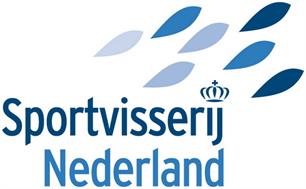Description
MijnVISmaat - Exotic fish occurrences in Belgium is an occurrence dataset published by the Royal Dutch Angling Federation and the Flemish Research Institute of Nature and Forest (INBO). It contains alien freshwater fish occurrences recorded through MijnVISmaat, a mobile application used by anglers for catch registration. This app was developed and managed by the Royal Dutch Angling Association (Sportvisserij Nederland: https://www.sportvisserijnederland.nl/). With this app anglers register their catches with a smartphone to create their personal logbook of catches with location, species, length, weight, bait, depth and photos. The app also provides a social platform to share catches and information with fellow anglers. The dataset is part of an effort to mobilize alien species data for Belgium. Here it is published as a standardized Darwin Core Archive and includes for each record an occurrenceID, date, location, sampling protocol, the number of recorded individuals, status (present/absent) and scientific name. Issues with the dataset can be reported at https://github.com/inbo/mijnvismaat-occurrences
We have released this dataset to the public domain under a Creative Commons Zero waiver. We would appreciate it if you follow the INBO norms for data use (https://www.inbo.be/en/norms-data-use) when using the data.
If you have any questions regarding this dataset, don't hesitate to contact us via the contact information provided in the metadata or via opendata@inbo.be.
Data Records
The data in this occurrence resource has been published as a Darwin Core Archive (DwC-A), which is a standardized format for sharing biodiversity data as a set of one or more data tables. The core data table contains 1,100 records.
This IPT archives the data and thus serves as the data repository. The data and resource metadata are available for download in the downloads section. The versions table lists other versions of the resource that have been made publicly available and allows tracking changes made to the resource over time.
Versions
The table below shows only published versions of the resource that are publicly accessible.
How to cite
Researchers should cite this work as follows:
Verspui R, Brosens D, Adriaens T, Verreycken H, Desmet P, Derks E (2021): MijnVISmaat - Exotic fish occurrences in Belgium. v1.5. Royal Dutch Angling Association. Dataset/Occurrence. http://ipt.nlbif.nl/resource?r=mijnvismaat-occurrences&v=1.5
Rights
Researchers should respect the following rights statement:
The publisher and rights holder of this work is Royal Dutch Angling Association. To the extent possible under law, the publisher has waived all rights to these data and has dedicated them to the Public Domain (CC0 1.0). Users may copy, modify, distribute and use the work, including for commercial purposes, without restriction.
GBIF Registration
This resource has been registered with GBIF, and assigned the following GBIF UUID: 34b382fc-8add-4565-965e-ca707d6fe48c. Royal Dutch Angling Association publishes this resource, and is itself registered in GBIF as a data publisher endorsed by Netherlands Biodiversity Information Facility.
Keywords
Occurrence; freshwater; invasive species; alien species; non-native species; citizen science; angling
Contacts
- Metadata Provider ●
- Originator ●
- Point Of Contact
- Metadata Provider ●
- Originator ●
- User
- Originator ●
- Point Of Contact
- Originator
Geographic Coverage
Belgium
| Bounding Coordinates | South West [49.49, 2.53], North East [51.51, 6.41] |
|---|
Taxonomic Coverage
This dataset contains exotic fish species
| Kingdom | Animalia |
|---|---|
| Phylum | Chordata |
| Class | Actinopterygii |
Temporal Coverage
| Start Date / End Date | 2011-01-01 / 2020-07-17 |
|---|
Project Data
The dataset was published within the framework of the TrIAS project (Tracking Invasive Alien Species, Vanderhoeven et al. 2017 - http://trias-project.be) .The project builds on two components: 1) The establishment of a data mobilization framework for alien species data from diverse data sources and 2) the development of data-driven procedures for risk evaluation based on risk modelling, risk mapping and risk assessment. TrIAS uses facilities from the Global Biodiversity Information Facility (GBIF, http://www.gbif.org), standards from the Biodiversity Information Standards organization (TDWG, http://www.tdwg.org) and expertise from LifeWatch INBO (http://lifewatch.inbo.be) to create and facilitate a systematic workflow. Alien species data are gathered from a large set of regional, national and international initiatives, including citizen science data, with a wide taxonomic scope from marine, terrestrial and freshwater environments. Observation data are funnelled in repeatable ways to GBIF. In parallel, a Belgian checklist of alien species is established, benefiting from various taxonomic and project-based checklists foreseen for GBIF publication. Published checklists and occurrence datasets can be found on the GBIF TrIAS community page (https://www.gbif.org/network/b153643d-735a-440f-a0e9-428b4f9d1cd2).
| Title | Tracking Invasive Alien Species (TrIAS) |
|---|---|
| Identifier | BR/165/A1/TrIAS |
| Funding | TrIAS is funded by the Belgian Science Policy Office (BELSPO) call for Belgian Research Action through Interdisciplinary Networks (BR/165/A1/TrIAS). |
| Study Area Description | Belgium |
The personnel involved in the project:
Sampling Methods
All the occurrences in this dataset are derived from fish catches (angling) by amateur fisherman in Belgium.
| Study Extent | The Royal Dutch Angling Association (Sportvisserij Nederland) animates a great sport fishing community in the Netherlands and Belgium. That community can quickly and easily register, share and analyze their catches through the app MijnVISmaat or website https://www.mijnvismaat.nl. The data in this dataset is a subset of the complete database and holds only data from alien fish in Belgium. |
|---|---|
| Quality Control | Data was validated using the provided location information and photos. |
Method step description:
- A subset of the MijnVISmaat data - alien fish species observed in Belgium - is extracted from the original database.
- Data was validated using the provided location information and photos.
- A custom R script is created on the ‘raw’ MijnVISmaat data to map the original data to Darwin Core as an occurrence core.
- The Darwin Core views are connected to the NLBIF IPT and documented with metadata.
- The dataset is published and registered with GBIF.
Additional Metadata
| Alternative Identifiers | 34b382fc-8add-4565-965e-ca707d6fe48c |
|---|---|
| http://ipt.nlbif.nl/resource?r=mijnvismaat-occurrences |
